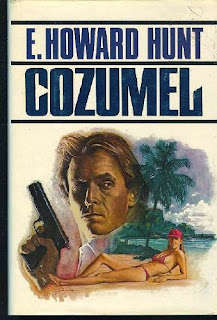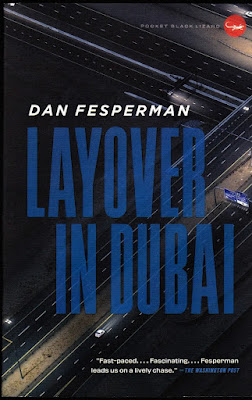Another Stephen King 600 pager has arrived, 20 years and 27 books after he suggested his retirement to the Los Angeles Times in 2002. It's aptly titled Fairy Tale, because it is one. But, like the most wicked Game of Thrones episode, King morphs Grimm's into a psychotic, rambunctious, and sinister story involving electrified zombies, dead mermaids, homicidal giants, and brutal “to the death” sporting events. It's The Running Man meets Snow White as only the King of Horror can deliver.Fairy Tale is mostly presented as three parts – the introduction to the main character up until he leaves this world (yep, that happens), the monomyth journey through the other world, and then prison. In typical King fashion, this probably could have been condensed into 300 pages, but it takes the author three pages just to make a cup of coffee. Apparently, it just needs elaboration.
The book is presented in the first-person by an older version of Charlie Reade (sounding like Charlie McGee of Firestarter) describing the harrowing events that transformed his life when he was 17. He swears no one will believe his story, including you, the Constant Reader. This story begins with Charlie explaining how his mother was killed on a wobbly bridge by an errant motorist. Charlie and his father sail into years of mourning, capsizing with his father's descent into the seas of alcoholism and regret. These early pages chronicle alcoholism well, complete with the AA stance and the narrow road to sobriety. It's the feel-good uplift.
Charlie's life changes when he hears Howard Bowditch's dog barking. Bowditch is the stereotypical spooky old guy that lives in the crumbling Psycho house in the neighborhood. Charlie comes to the aid of Radar, a fun German Shepherd that leads him to rescue his owner Bowditch from the a long fall from a ladder – if rescuing means calling the rescue squad and promising to keep Radar. Soon, Charlie finds himself at the aid of Bowditch. The lonely old man has no one else and Charlie needs to mature from star athlete and childhood prankster to a civilized caring youngster. The two strike up a bond and Charlie agrees to be Bowditch's care guide, prescription deliverer, carpenter, landscaper, dog feeder, friend, and gold hauler. Gold?!?
It turns out that Bowditch has a big 'ole secret he keeps hidden in the wood shed. If you want to know the secret and not necessarily spoil the fun, continue to read the next THREE paragraphs. If you want to skip to how I felt about the book, feel free to skip these THREE paragraphs.
Bowditch has something like $100,000 in gold nuggets he keeps in a safe. He asks Charlie to visit a local jeweler associate who will buy some gold nuggets so that Bowditch can pay off his hospital bill and also pay Charlie for his services. Where is this old recluse gaining this kind of loot? After a few chapters, Bowditch explains to Charlie that there is a secret world inside of his woodshed. Due to some rather dire circumstances, Charlie steps into the shed and descends into another world.
Charlie soon learns that the other world, seemingly hundreds of feet under Bowditch's property, is a cursed fairy tale land. Yeah, there's mermaids, kings, princesses, giants, talking horses, and lots of gold, but there is also a visible doom and gloom that has enveloped the entire kingdom. People are no longer whole, like Charlie, but instead are missing things like mouths or ears. They have seemingly lost these things due to a corrupt hierarchy that have awakened an evil thing in a Hellish well. Keep in mind that King wrote Fairy Tale during the pandemic in 2020. Considering his white-hot hatred for Republicans (he's from Maine for God's sake!), it's easy to see his inspirations for the novel – cursed land, an ill civilization, a corrupt monarchy, fighting the establishment, contending with the maaaaaaaan. You get the idea.
But, the land is important to Charlie because it possesses a sundial that can be used to reverse aging, a side-story that involves Radar's old age and debilitating physical condition. Charlie loves the dog so much that he is willing to battle through unknown terrors to turn the clock back on Radar's dog years. I'd do the same for my beloved canines Lily, Rose, and Carly. Maybe my hedgehog too. Regardless, this journey to the sundial involves a lot of adventure that eventually places Charlie in prison and forced to fight to the death in gladiator-styled sporting events. Wild and wacky stuff.
So, does this Happily Ever After thing really work for Stephen King and his loyal fan base? Yeah, probably. It has similarities to so many of his other books and the formula he uses of parallel worlds. He used the idea for Lisey's Story, Rose Madder, The Talisman, and obviously the massive series of Dark Tower fantasy novels. Plus, there are countless short stories by the author that involve some sort of unlikely hero flirting with the idea of another world within our own. The question everyone asks is if Fairy Tale has any Dark Tower references. Yes, but nothing overly striking. I've only read the first three Dark Tower novels, but nothing detracts from Fairy Tale if you aren't familiar with Roland's epic journey.
I appreciated King's references to plenty of Paperback Warrior material, specifically Dan Marlowe's The Name of the Game is Death, Cornell Woolrich's The Bride Wore Black and The Black Angel, as well as mentions of Ray Bradbury and H.P. Lovecraft. King loves his vintage fiction as much as we do. In fact, it's hard to ignore the comparisons to other “underground world” literary works by the likes of Edgar Rice Burroughs, Lin Carter, and Jules Verne. Fairy Tale fits right in, but cleverly shifts the heroism to a less muscular man instead of the typical barrel-chested jungle crawler.
Overall, I enjoyed Fairy Tale but won't ever read it again. It was too long, contained a ton of characters, and the story was formulaic and predictable. King is no longer at his artistic apex, but can still write his ass off and pull off crime-fiction, horror, science-fiction, and fantasy with the best of them. Fairy Tale was probably written more for himself than his Constant Reader. During 2020's unrest, a year that will forever alter human history, writing this novel was probably a means of catharsis for the author. It's King's Fairy Tale. For us, it's just a story about a boy and his dog.
Buy a copy of this book HERE.






















